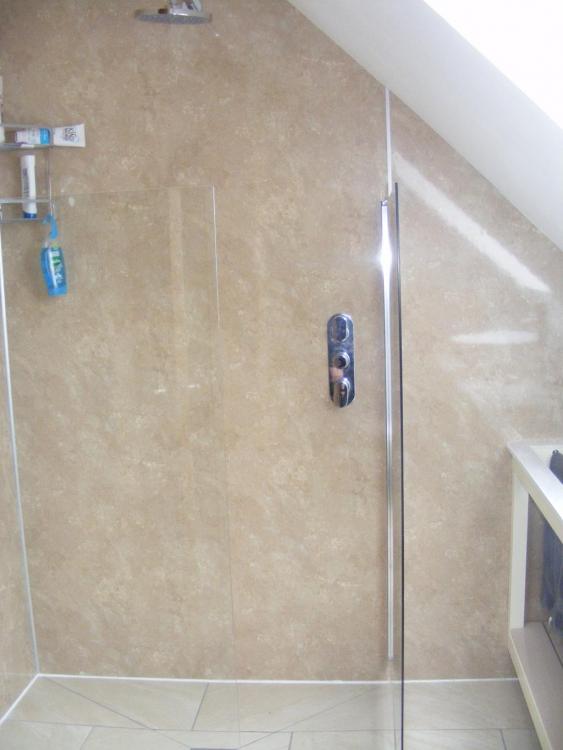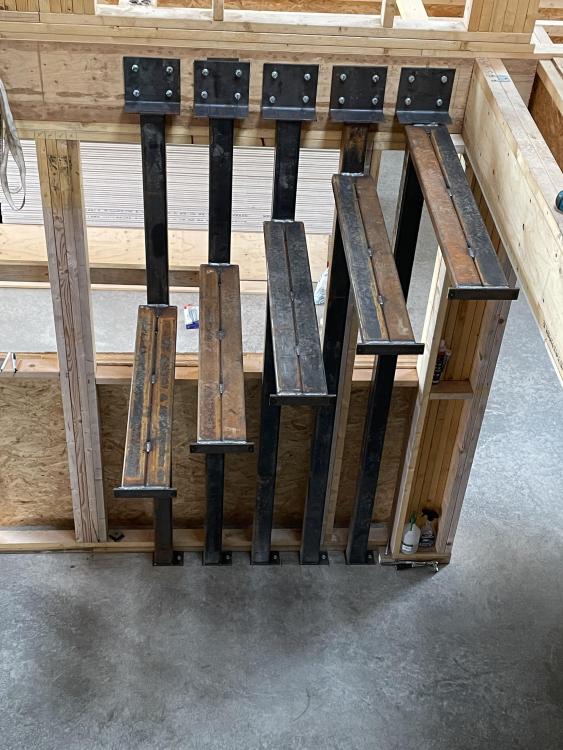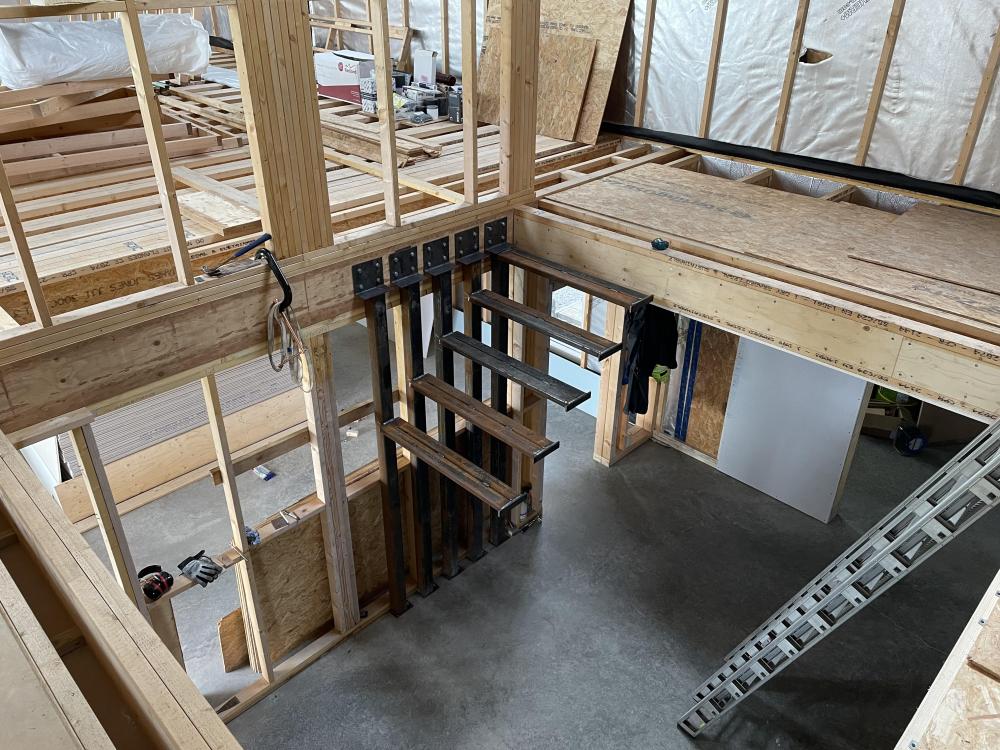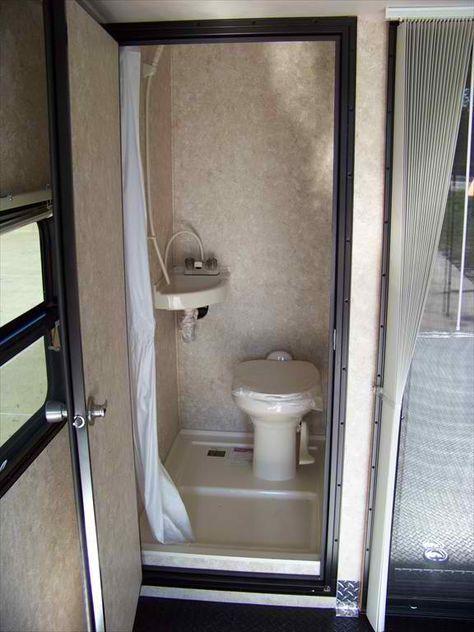Leaderboard
Popular Content
Showing content with the highest reputation on 06/08/23 in all areas
-
I had a phone call from someone at SEPA following up mu complaint today. An outcome from that confirmation is that in Scotland, it is NOT illegal for an existing septic tank to discharge to a watercourse, and there is no requirement to upgrade them unless there is a specific problem with pollution. The General Binding rules do NOT apply in Scotland. The reasons given for not outlawing existing septic tanks discharging to watercourses was the sheer number of them in existence and the costs of upgrading. I then got onto the cost issue, £170 to register an existing septic tank which was an entirely automated process that issued a registration within seconds of submitting the details and paying the fee. That is still going to be looked at and I await a response. As part of the discussion I pointed out the fees charged by a public body must be a fair representation of the costs and work involved in providing that service. I pointed out when building my new house I had to get approval from SEPA and a discharge permit to allow my new treatment plant to discharge to the burn. That was a process that involved discussions with SEPA staff to agree a suitable acceptable system. For that, with much interaction with SEPA staff i paid a lower fee than I have just been charged for this automated registration for an old system with no staff time involved. I will let you know what they say about that.3 points
-
Whatever you do, don't tell the water company. This will just open up a world of pain. If you have an existing storm water connection, you can use this. If it's a combined sewer, you can use this. The existing water is clearly going somewhere so I wouldn't worry about it. Lift some lids and see what is what. Remember, don't speak to the water company, and on your building control drawings have the new storm drains shown on the drawing "connection to existing storm water system".3 points
-
2 points
-
Short hinged glass shower screen. They are dirt cheap, sold in the sheds as an over bath shower screen. Ours are set about 100mm off the floor and the top is about head height for us. Very little water splashes over or under. We have two, one to stop the towels getting splashed and one to stop the door and toilet getting splashed. They hinge either way and fold almost flat against the wall when the shower is not in use.2 points
-
not to be played about with. Scaffolds must be designed, erected, altered and dismantled only by competent people and the work should be carried out under the direction of a competent supervisor. https://www.hse.gov.uk/construction/safetytopics/scaffoldinginfo.htm2 points
-
We are considering the drastic step of demolishing and rebuilding our house where we have lived for 40 years. This is because in winter it is cold, damp and draughty, but it is not worth spending a lot of money to address these issues as it is also subject to flooding. The house is on a wonderful plot with great views. There seems to be absolutly no possibility of getting any equivavent plot in the area. The outline plan is to build a timber frame house, possibly to passivhus standard on a new 2 meters block wall on the same footprint. Thus it would be a 2 floor house with a full height cellar that is designed to take flood water in and drain away without damage. We are at the start of the project and have just appointed architects. I consider myself to be a competant DIYer having done a lot to this house, and another one over the years, with experience of most trades. My emotions vary from being excited by the prospect, to being terrified. At present I am spending a lot of time investigating aspects of technology, fittings, techniques etc. trying to get myself in a position where we can make sensible decisions when the time comes. I anticipate that I may be posting for help and ideas on a wide variety of topics as the project progresses.1 point
-
Hi @Temp, @Marvin and @Alan Ambrose, thank you for your time to respond and your valuable suggestions. This is good knowledge to have in the back of our minds when speaking to the architect next. We have already started looking and asking around in the local area but have not yet found a builder who's been recommended wholeheartedly. However, the process has thrown up plenty of suggestions for good individual trades people so that might be the way to go and maybe downscale on some of the more complex parts of the project until we can find the right builder to tackle them. I'll definitely also start looking whether a project manager / QS / SE might be the right person to support and keep the builder in check. Good to know that it wouldn't be unusual to have someone other than the architect handle to project management from this stage. Finger's crossed we'll get some more clarity over the coming weeks!1 point
-
it depends if the internal walls are structural (holding up the roof), they could just be built off the pad. The more internal walls you can remove the easier and better the insulation will be, walls can be rapidly built in stud after.1 point
-
1 point
-
1 point
-
1 point
-
I recently joined the forum to say hello and thank you to all of you for the wealth of informations and advice that buildhub provides. Started my journey two years ago when I purchased a plot of land with a tired bungalow and outbuildings. Initially we considered to refurb, but eventually realised that the demolition and rebuild option was the way to go. The saga of the planning started…. Today the ICF block was delivered, so we should make a bit more progress in the next few weeks. No regrets so far!1 point
-
and now I see the image has actually appeared. had trouble with technology did you? anyway, that is a fantastic looking staircase. is it fixed to the wall or self supporting?1 point
-
1 point
-
I'd go with a good few pilot holes. Middle, Top,Right, Bottom, and left. You can easily fill them if it don't work out.1 point
-
Trench depth whether original or reduced ground level. Reach of bucket and stability of ground The require depth isforbelow thel finished ground level....where dampness will be steady.1 point
-
Yup. You won’t notice it in the length, only IF you walked side to side. Lay off the pop and you’ll be alright.1 point
-
The front footings will support two cantilevered dormers with gabled windows.Lots of steel and concrete in the ground…1 point
-
My thoughts (like those of others on here) in relation to heat pumps are pretty well documented in other threads on this forum and I don't think I should labour them. My biggest issues personally are 1. The fact that they have worked their way into permitted development rights so that the use of an MCS contractor (design + install, they cannot be split by the customer) is required if you are to install a heat pump without getting express planning consent, thus effectively creating a near-monopoly 2. The fact that they more or less insist on a method of calculating the system size which, for retrofits, ie their main market, may bear little or no relationship to reality. This wouldn't matter except that system sizing is so crucial to the performance of the system, the cost and the disruption. 3. The fact that their rules are largely about process not outcomes, which protects the installer not the consumer whilst at the same time stifling innovation In fairness to MCS they have recognised (3) in their latest consultation, whether it will change I don't know. I recently challenged them on (2) and today received a response. I intend to ask for permission to publish it as it deserves to be heard. I haven't yet engaged with them in respect of point (1). I should add that I'm just a consumer, not from the trade, albeit a consumer with a background in engineering, a degree in physics and who has spent 2 years failing to get a quote from an MCS installer for a heat pump suitable for my property (I've had plenty of quotes!) and reading the experiences of other on this forum and elsewhere. I suppose one could deploy the 'its early days and work in progress defence', to use software analogy - its still in beta testing. However beta test software is generally declared as such and those who participate do so knowingly and are given meaningful feedback opportunities. In relation to solar PV, my comment was that lots of the early installers went bust when the grants dried up and I am guessing the same will happen with Heat Pumps. Realistically people see an opportunity to harvest some taxpayer cash. Some of those are competent, professional and value their reputations, because they intend to stay in business (feel free to complete the sentence). As to design resources, I cant point at a 'handbook' (others may) but reading on this forum and watching heat geek and john cantor videos will help. If you are designing for an existing property, get a smart meter for your gas (and the ability to download the readings) asap, or take daily fuel consumption readings in the heating season if not on gas. Note any changes you make to the way you use your heating. This will give you an experimental determination of actual load. Then use this information to sense test any system sizing done by spreadsheet. Getting this right is more than half the battle.1 point
-
My rule of thumb on heavy clay near trees is Strip footings down to 2.4m Piling if below 2.5m But depends on job size and details1 point
-
A scaffolder who has been using it with the new boards will be erecting it, doing the uplifts and weekly ticket.1 point
-
1 point
-
Thanks, it sounds like it’s worth doing then1 point
-
1 point
-
I think he said option 1 or 2(A vs B), there's no mention of option1(A) being a single HP and option 2(B) being 2 HPs1 point
-
I moved mine on a hired 7.5t flatbed when I bought it, all loaded and unloaded by hand. Nothing wrong with Kwikstage like that. The metalwork is almost indestructable. It is the battons (boards) that are the trouble, wooden ones particularly if stored badly can be rotten. I "tested" each of mine by resting the 2 ends of each board on a concrete block each end, and then jumping up and down on the middle of it. Steelstage battons are much better if you can get them. Nothing wrong with using Kwikstage or any other system scaffold like cuplock etc. It's how you put it up that makes it safe or not.1 point
-
Got half the bean holes dug with my knocked up tool that I chucked together from scrap. Hit a red ant nest who weren't too happy. Got a few stings for my efforts! The beans are more than ready to go in: Bear in mind here that I'm not a gardener! The cored hole is nom 3" dia and say 5 1/2" deep. Where they're dug, inside the rectangle of the galv frame, that's the relatively soft soil that I painstakingly sieved and layered with compost, ash, etc. Outside the galv frame is virgin flint country The little pots the beans are in now are nom 2 1/2" dia by 2 1/2" deep. I'm assuming to take the plants out of the pots and drop them in the holes. Maybe firmly pack round them with some bagged compost? Or should I leave in the pots and just drop in the hole, then again maybe just remove the bottom circle of card? Or run scissors up the side? A success rate of around 47/50. That was 47 new seeds and 3 saved. Not sure on whether it was new or old seeds that failed. When I say failed, all the seeds came up but I've 3 stragglers. A couple were pot bound and grew the wrong way up and the 3rd I think was maybe got at by a pigeon. Cheers1 point
-
Hi @jsjsjs Welcome to the forum. If it turns out to out helpful perhaps consider donating, we have some key fobs to give away to donors at the moment. https://forum.buildhub.org.uk/topic/33304-free-build-hub-key-fob-for-donors/#comment-490153 In our experience dealing with people from the planners to trades is the hard part. We originally planned to have our Architect manage our project but our builder was pretty good and the Architect hardly ever came to the site so I felt we wasted some money on him. Some people use an Architect to manage their builder, some manage the builder themselves and others hire trades themselves. The former is the most expensive but least risk, the latter can be the cheapest but higher risk and a lot of work. There are good, bad and positively ugly builders out there. There are other ways to go.. An option is to hire a Project Manager who might be a retired builder or other profession. With a project manager you pay them a fixed fee and they should be helping you minimise overall costs. They would probably be on site much more than an Architect. Hiring individual trades with help from a project manager might be an option. Another option is to use a builder but hire a Quantity Surveyor to control payments to the Builder. The QS would visit and assess how much work has been done to date and give you the OK to pay the builder that stage payment. If you decide to make changes the QS can help assess if the builder is charging the right amount - especially if its the builder proposing the changes. Have you tried to find a builder yourself? While looking for plots we did a lot of driving around and any time I saw a nice house being built I asked if the boss was on site. I explained I might be looking for a builder and asked to look around. You can get a good idea what sort of quality they are capable of. Look for odd gaps, neat or untidy plumbing etc. Ask questions and see how they answer you. If they answered with "Oh don't worry about that" I didn't bother to keep their business cards. If they carefully explained their approach to that issue I was more likely to keep it. We found our builder that way. He was working on a fabulous barn conversion. We gave his details to the Architect and he was included in the bidding process and he turned in the lowest offer of three we had. Two other bidders took me to see houses they had built for other people, sure they were nice but I couldn't be sure they wernt taking me to see one they built for their mother 🙂 Are you living in the house? If the house has been unoccupied for more than two years and is still unoccupied you should be able to get renovation work at the reduced VAT rate of 5% instead of 20%. The rules allow you to move in after work starts but not before.1 point
-
+1. I agree that fighting the existing topology is an uphill battle (pun intended) and that you are much better keeping some of the elevated ground as a design feature, that will also save you money and hassle. If you were to flatten the whole thing, the high fences either side might make the garden look like a prison yard.1 point
-
We have clay soil and got a soil condition report. That showed the clay wasn't really a bad type and strip foundations with expansion boards were allowed for our new house. Not even terribly deep. And we have trees nearby. One just 3m away in neighbours garden. Several houses down the road they just assumed they would need piles and they had to go so deep they joke about a man in Australia using the other end as fence posts. I would ask around and see if anyone in the area has built recently.1 point
-
I'd recommend a door or screen too. Unless you actually need a wet room for mobility reasons1 point
-
For anyone who is wondering I have used LTP Forrex diluted 1/3 and it's has removed the stains within 2 hrs 👍👍👍🎉🎉🎉🎉1 point
-
Plus 1 If they didn’t have means of moving it It wouldn’t be on stilage1 point
-
Looks like it's on stillages, most farms will have a telle handler, or tractor with forks. Just pick each up and off you go. If your buying from a farmer I'm sure they will help load1 point
-
1 point
-
Good Morning. Do it. You will have a fantastic place to live for the rest of your life, and much smaller bills.1 point
-
Welcome to forum lots of helpful ideas on here from other self builders.1 point
-
I visited Crossway while it was being built and filmed for Grand Designs in 2008. Richard Hawkes had coloured glass chips and special aggregates added to the surface of the slab when it was laid. The surface was then ground down with different grades resulting in a highly polished attractive looking surface. A friend had their conventional concrete slab ground down and polished, and although no unusual aggregates were used, it looked an attractive interesting finish.1 point
-
That is a great result. Now you only have to imagine all that muck away, followed by tonnes of concrete. I bet that result made you smile.1 point
-
I've had many thousands of m2 of slab done. Only one client wanted it sprinkled with minerals before final polish. He was happy but I wasn't greatly impressed. Then, complexity and cost wise, I think comes the option to grind the top off again, exposing shiny polished stones, or glass. I think that can look OK but I'd like to hear any more. Saw this done once for ultra-flat purposes with normal stone. I assume it needs pretty stones really. Expensive but maybe not much more than fancy tiling? Then there are fancy glass inlay toppings like mosaics. Shopping centre style. People I know who fancied it have all changed their minds. Probably re cost. So perhaps there are different interpretations of 'polished'. I'd be very pleased to hear more on the pros and cons, and costs.1 point
-
He would issue a electrical installation certificate as advised above.1 point
-
1 point
-
Yeah I don’t understand it either. It seems to be on a continuum that ends up at chem trails and flat earth.1 point
-
Regardless of what you choose to believe consider what if our activity really is having an impact why wouldn’t we err on the side of caution and take reasonable steps to reduce the impact. Cutting consumption and waste and being more sustainable in all areas of life just seems to make sense to me. Ultimately it matters not as if climate change wipes us out the Earth will likely recover despite us and would be better off without us.1 point
-
I’ve heard Isotex Italy will be offering any customers affected a large discount we have been left with a house half built so yesterday me and my Husband started building ourselves.1 point
-
There is another product on the market - or rather two products, once for cooling, the other for humidifying - specifically designed for MVHR use, from HomEvap. As noted above, the low airflow in MVHR systems means that the effect will be modest, though so will the cost of running it. The cooler works by humidifying the extract air just before the heat exchanger, dropping the temperature through evaporation, which then cools the incoming air by a few degrees, with no need for a separate chiller unit. I'm hoping to install one later this year. The humidifier is fitted on the supply side. In the UK you can buy a Blauberg branded version of the cooler, albeit at a premium price. They may sell you the humidifier too, otherwise you'll need to find an EU supplier prepared to ship them to the UK.1 point
-
dont take too much notice of EPC its junk science at least at the moment where electric is penalised. Hire in a micro digger and tracked dumper (both go through a front door) for a weekend and you'll have it done. 300mm of XPS insulation would be great. 150/200mm hardcore+sand blinding+ 150/200 conc then screed on top. Just work down from FFL to see your max depth, careful not to smash any drains. 100mm pipe spacing allows underfloor flow temp to run lower and much more efficiency for the small extra cost of a bit more pipe. Dont bother with zoning the underfloor it just reduces efficiency.1 point
-
It's unlightly you'll need to underpin for a 50 year old building. Your plan sounds good with a couple of points. Marvin has it nailed. 1. Airtightness. Very DIYable and the most bang for your buck in terms of energy saving and comfort. Make a DIY blowerdoor fan. 2. Ventilation. Needs to be mechanical, continuous running and best of all with heat recovery. 3. Floor insulation. Dig out and start again. If possible consider using the opportunity to make the already small rooms taller if possible. You'll be disrupted anyway by the dry lining. No need for UFH means you can do it a room at a time. 4. ASHP. Proceed with caution. They do not play nice with high heat loss houses. 5. Windows. "A" rated unfortunately can mean little. Good spec triple glazed UPVC with multiple compression seals won't break the bank. Make sure they are continuous with the insulation layer. Again you can do one room at a time if needed. Good luck!1 point
-
25mm xps on floor isnt really going to do much. you want 300mm, while it is a couple days disruption it will enable you to have underfloor heating and mitigate the massive cold bridging into the walls.1 point
This leaderboard is set to London/GMT+01:00
















